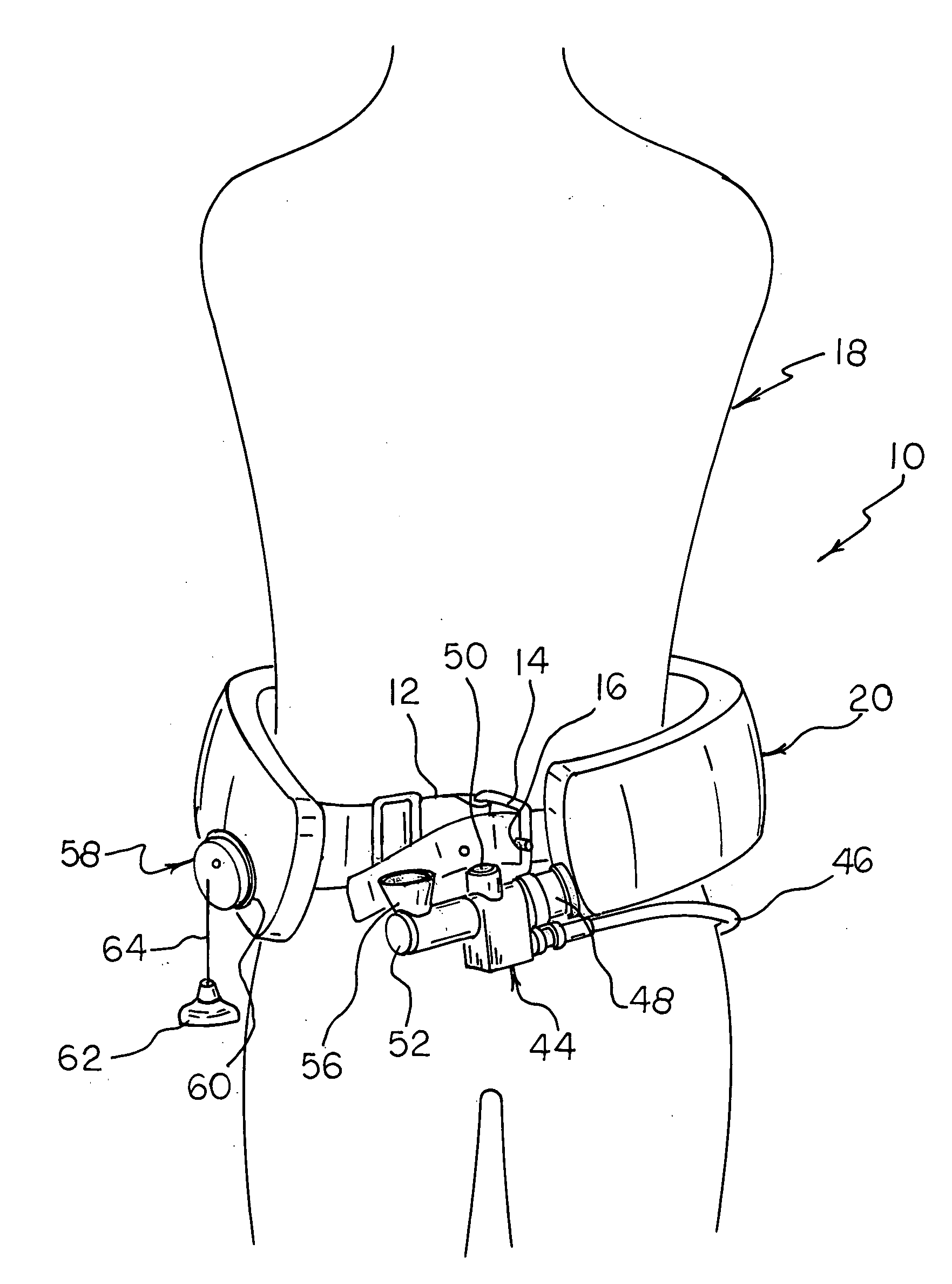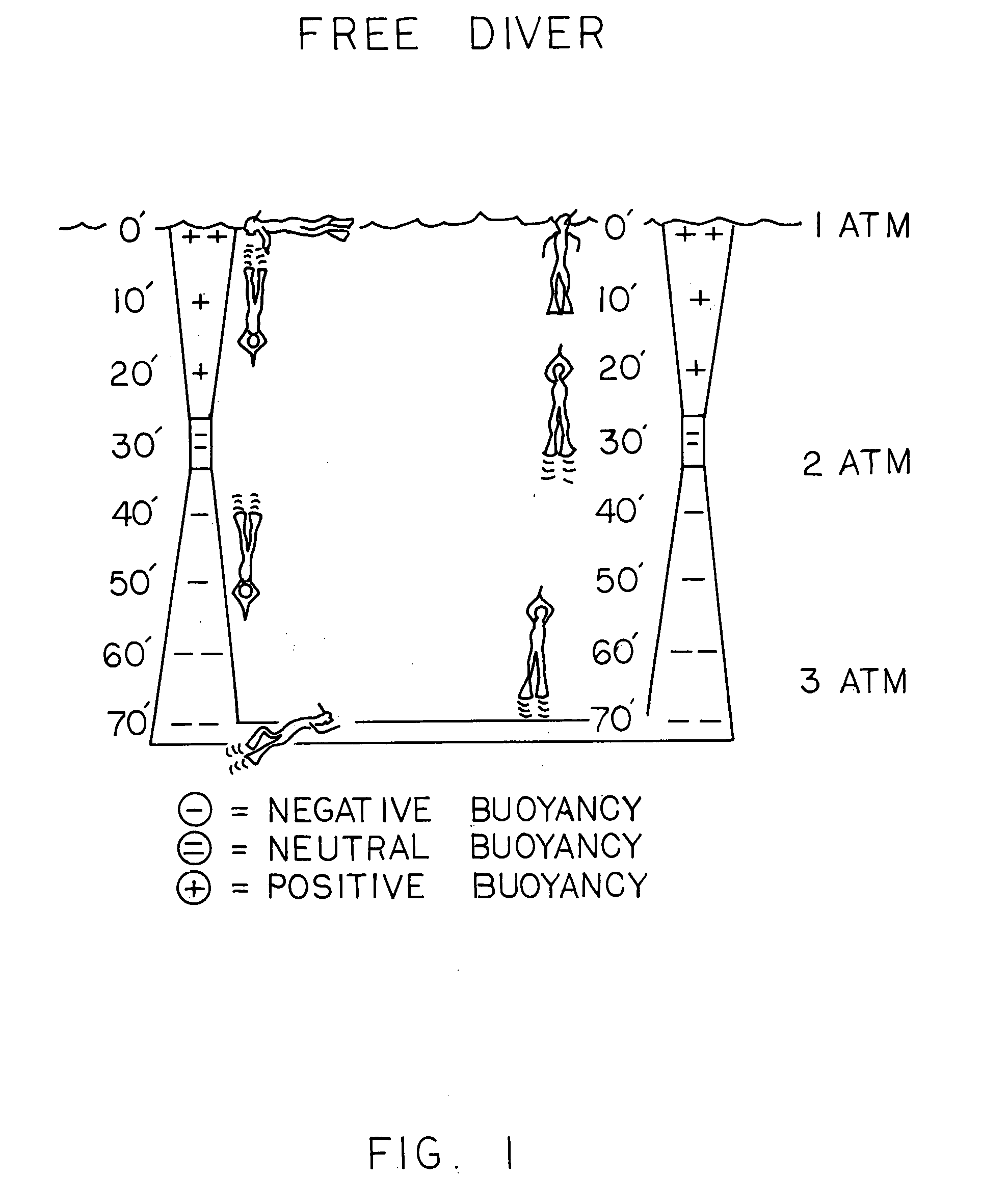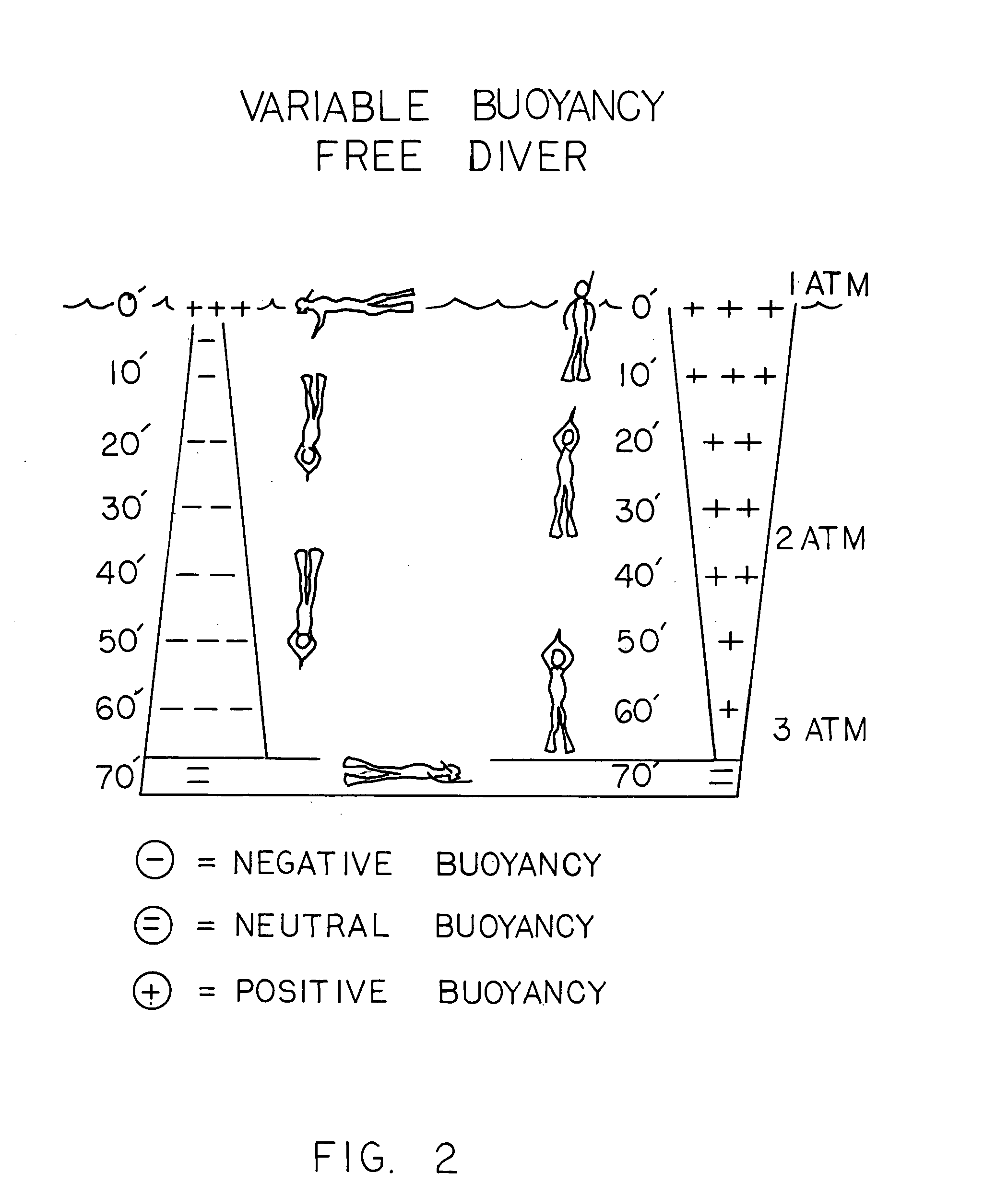Buoyancy compensator belt
- Summary
- Abstract
- Description
- Claims
- Application Information
AI Technical Summary
Benefits of technology
Problems solved by technology
Method used
Image
Examples
Embodiment Construction
[0039]Referring to the Figures, the buoyancy compensator belt 10 of the invention comprises a thick, wide belt 12, preferably of pliable plastic that is elastic, having a belt buckle 14 at one end which adjustably engages one of a plurality of belt holes 16 at its other end to fit the waist of the free diver (shown in FIGS. 1-3 for illustrative purposes as the mannequin 18). The preferred elasticity of the belt 12 is such that when tightly fitted around the diver's waist, it will expand and contract along the conventional expansion and contraction of the diver's waist during to the dive to thereby remain fitted around the diver's waist without riding-up the diver's chest during head-up ascent or riding-down onto the diver's legs during head-down decent. It is noted that other forms of belts (e.g., fabric or other materials) and belt buckles may optionally be employed without departing from the spirit and scope of this invention.
[0040]The buoyancy compensator belt 10 of the invention...
PUM
 Login to View More
Login to View More Abstract
Description
Claims
Application Information
 Login to View More
Login to View More - R&D
- Intellectual Property
- Life Sciences
- Materials
- Tech Scout
- Unparalleled Data Quality
- Higher Quality Content
- 60% Fewer Hallucinations
Browse by: Latest US Patents, China's latest patents, Technical Efficacy Thesaurus, Application Domain, Technology Topic, Popular Technical Reports.
© 2025 PatSnap. All rights reserved.Legal|Privacy policy|Modern Slavery Act Transparency Statement|Sitemap|About US| Contact US: help@patsnap.com



